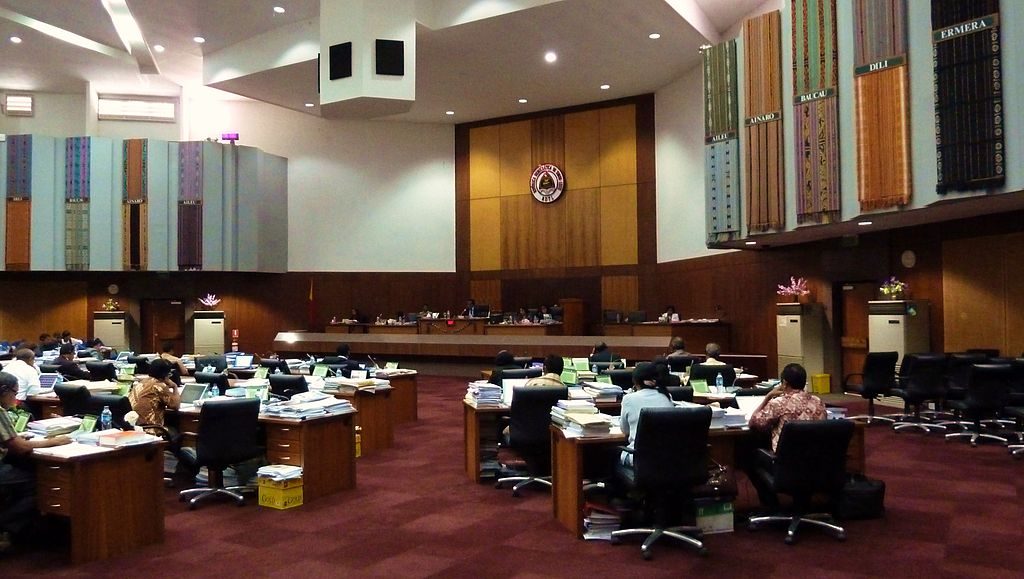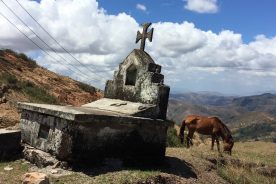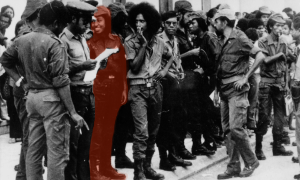More than five months after Timor-Leste’s parliamentary elections on 12 May, the country’s president is still refusing to appoint several of the candidates for executive posts proposed by the new prime minister. Just what is behind this, politically and constitutionally, and what are the implications?
Democratic polities that adopt a republican regime, like Timor-Leste, must also choose which of the three varieties of government systems are compatible with the republican model. Historically, presidentialism was the first republican system of government in modern times. It is characterised by a radical separation between the president, who is the head of the executive, and the legislature. Generally there is no prime minister, and the government does not respond to the legislature, only to the president. Both the president and the legislature are chosen through popular elections. Both the president and the legislature have fixed terms in office. A major example is the United States of America.
An evolution of constitutional monarchies resulted in parliamentary republics, where the president is not directly elected by the people, but rather by the parliament or a special chamber composed of elected citizens. In Germany, for instance, the Bundesversammlung (Federal Assembly) brings together parliamentarians from the federal and the regional levels specially convened to elect the president. Governments are normally headed by a prime minister (who may be known by a different name, such as chancellor) and depend on the support of parliament to survive. Predominantly, the role of parliamentary presidents is formal and ceremonial, although they can have an important moral influence (like in Italy), and the formation and termination of governments is not in their normal array of competencies.
The third option, semi-presidentialism, was born in the early part of the twentieth century and remained a marginal option until France adopted it in 1962 and the “third wave of democratisation” after 1974 turned it into a popular choice for young democracies. According to political scientist Robert Elgie (2011), “semi-presidentialism is where there is a fixed term elected president and a prime minister and cabinet who are collectively responsible to the legislature”.
In such a framework, the dual popular legitimacy of the president and the parliament (similar to a presidential system) combine with the responsibility of the prime minister before the parliament (as in the case of parliamentary republics) to form a third genus of government systems, one which should not be conflated with either the presidential or parliamentary types although they share some features with them.
This is the case with Timor-Leste, whose constitution (Section 107) reads: “The government shall be accountable to the President of the Republic and to the National Parliament for conducting and executing the domestic and foreign policy in accordance with the Constitution and the law”. This formulation makes it clear that the prime minister is, by default, the person in charge of defining public policies and implementing them, although the president retains important powers as the government must somehow enjoy his confidence.
The literature on semi-presidentialism broadly considers that this government system, as defined in Robert Elgie’s terms, is an umbrella under which important sub-types may be considered. The most popular distinction is the one proposed by political scientists Matthew S. Shugart and John M. Carey in 1992 between “premier-presidentialism” and “president-parliamentarism”. The former is “a form of semi-presidentialism where the prime minister and cabinet are solely responsible to the legislature”, significantly restraining the functions of the elected president and showing similarities to parliamentary systems, whereas the latter is “a form of semi-presidentialism where the prime minister and cabinet are collectively responsible to both the legislature and the president”.
Semi-presidentialism in practice
Although the majority of academics writing on Timor-Leste are inclined to see it as an example of premier-presidentialism with a weak president, I regard the Timorese experience as a case of president-parliamentarism.
More than a futile debate on definitions, the distinction between sub-types semi-presidentialism pertains to a theoretical debate on the merits of each of them and their democratic credentials. The argument sustaining this debate is that the dual responsibility of governments under president-parliamentarism may lead presidents and prime ministers to compete for political goals. This may induce tension and eventually confrontation and ultimately clashes that may endanger the survival of democracy. Conversely, when presidents are not responsible for the government that depends solely on its capacity for survival in parliament, the main actors are encouraged to cooperate. The quality of democracy tends to be better and gain deeper roots. In this light, one might argue that by choosing president-parliamentarism, Timor-Leste engaged in the most difficult way to overcome the many problems that divide its political elite. However, the experience of the first three presidents was positive, as the country has been seen to stabilise and move towards democratic consolidation.
The French political scientist Maurice Duverger (1996), writing on the phenomena that could be seen under the semi-presidential umbrella, stated that this system allowed for three different situations. First, the president as the leader of the parliamentary majority (which might have an effect of super-presidentialisation of the regime, reducing checks and balances, in the analysis of political scientist Gianfranco Pasquino). Second, the president as leader of the parliamentary opposition—a scenario that has been labelled “cohabitation”, which has taken place, for instance, in France three times, all leading to strained relations between presidents and prime ministers who all made attempts to win the following presidential elections. A third scenario is presidents without-majority, that is, presidents who are not formal members or leaders of any political party present in parliament and can thus place their realm of activities “above the party fray”, and discharge their mandate as if they had what the early nineteenth century Swiss-French theorist Benjamin Constant called pouvoir moderateur (moderating power), different from executive, legislative and judicial powers.
The argument that I have been sustaining for some time posits that the choice of “independent” presidential candidates in Timor-Leste (i.e., candidates without party affiliation, despite the possibility of their being supported by one or more parties) was the key to understand why there was, by and large, no major clash between the presidential and the prime ministerial agendas as the theory would predict Timor-Leste experience given the variety of semi-presidentialism applied there. The political crisis of 2006 was a major exception, but even then the constitution was upheld and the prime minister tendered his resignation. On the other hand, presidents who have felt inclined to intervene more in the design of everyday policies have stepped down and formed political parties to contest the premiership. Xanana Gusmão did so in 2007, and Taur Matan Ruak followed the example ten years later. The key to understanding the mechanisms of semi-presidentialism is to consider that it has an in-built model of power-sharing—and Timor-Leste seems to have followed that principle.
Partisan president, divided government?
The presidential election of 2017, however, brought an altogether new scenario. Francisco Guterres Lu Olo, chairman of Fretilin, ran for the presidency for a third time, but in this instance he was able to forge an informal coalition between his party and Xanana’s CNRT—to a large extent, mirroring the entente that supported the “Government of National Inclusion” headed by former prime minister Rui Maria de Araújo—and won the election on the first round. For the first time, Timor-Leste had a president of the Republic who claimed like his predecessors that he would be “the president of all Timorese”, but who retained his party affiliation and a high position within his party. This fact would be consequential for the events that followed.
The legislative elections were fought without either of the major contenders—Fretilin and CNRT—distancing themselves from the formula that sustained the government of Rui Maria de Araujo. If any significant opposition to main aspects of public policies being pursued by that government surfaced, it came from Taur Matan Ruak’s PLP party. As for the mainstream parties, the unstated but nevertheless quite obvious assumptions were that the prime minister of a coalition government should be a member of the Gerasaun Foun—the younger generation, who came of age during the Indonesian occupation—and not be a party leader.
Timor-Leste is no failing state
Apocalyptic portrayals of the country's future distract us from what its real problems are, and how to address them.
However, the investiture of government is only complete when it receives the approval of parliament—through a motion of confidence in the government program that has to be submitted within thirty days, or merely by not presenting any opposition to it. But Xanana had come to terms with Taur Matan Ruak’s PLP and the newcomer KHUNTO, and together they commanded 35 votes, enough to pass a motion of rejection of the government’s program. Alkatiri did not take up the constitutional provision to present a new program—in the process letting pass the thirty day period in which a revised program was expected (although this term is not expressly written in the constitution).
The president chose to keep Alkatiri as caretaker prime minister without any deadline. When the opposition coalition called for a vote of no-confidence that would terminate the life of the government, the speaker of the House refused to put it to the vote, triggering mounting tension. In fact, by then the opposition was claiming the right to be offered the possibility of forming a majority government. Fretilin and PD, on the other hand, suggested that the solution for the deadlock would be fresh elections (which could only be called six months after the previous ones) in an attempt to use the power of incumbency to reinforce their share of the vote. President Francisco Guterres (or “Lu Olo”) stood by his party and in late January 2018 called fresh elections for May.
Xanana’s CNRT, TMR’s PLP and KHUNTO formed an alliance that won the May poll. Although Fretilin increased its vote share, it did not gain any additional seats. Since the rationale for early elections in cases like this is to modify the majority in parliament, it may be said that this outcome represented a political defeat for the president, who was forced to deal with an antagonistic majority. Timor-Leste was moving in the direction of co-habitation between Xanana’s government and Fretilin president whose party was the main opponent to the parliamentary majority. Lu Olo, however, was no lame duck.
One week after the election, on the occasion of the celebrations of independence, Lu Olo reiterated that he would serve as “the president of all Timorese”—but not to give up his party position; insisted the government must follow “the national interest” of which he claimed to be the highest interpreter; and finally, he admitted he would make effective use of “all his constitutional powers”. Under the guise of continuity, Lu Olo was proposing a new reading of presidential powers, the critical point of which is the idea that in the Timorese constitutional system a parliamentary majority is necessary but not sufficient to guarantee free rein to the government.
He soon showed what he had in mind.The winning CNRT–PLP–KHUNTO coalition proposed Taur Matan Ruak for the post of prime minister, which Lu Olo accepted. It then proposed a list of another 41 members of government. The president suggested the prime minister “ought to reconsider” up to 12 names due to “poor moral standing” and for “being under judicial inquiry regarding misconduct” (i.e., corruption charges). The presidential move—which seems to have been peacefully accepted by public opinion—hit key ministerial candidates like the proposed finance minister, the minister for natural resources (i.e., in charge of the petroleum file) or the minister of health. Almost all of these nominees were affiliated with CNRT, the one party in the coalition with previous government experience.
The risks of stalemate
Five months after being sworn in, Prime Minister Tuar Matan Ruak still has only a partial government. Xanana has been the loudest voice in criticising the president for “usurpation of powers” and has threatened to start impeachment procedures (which Fretilin would easily defeat, given that they have more than one third of the seats in the House required to block any such initiative). The prime minister has withdrawn Xanana’s proposed appointment as state minister and councillor to the prime minister in protest, while three of the candidates suggested by CNRT who are acceptable to the president have so far refused to be sworn in. In retaliation against the president’s refusal to appoint several ministers who had been elected MPs, the parliament blocked permission for the president to make several overseas visits, including to New York for the meeting of the UN General Assembly.
Back in 2007, president José Ramos-Horta opposed the appointment of more than one minister, without making public his reasons—which remained confined to the prime minister. In 2012, president Tuar Matan Ruak publicly opposed the appointment of the proposed minister for defence. There are precedents, and there is no doubt that the president, under Section 107 of the constitution, is entitled not to accept names that are proposed to fill seats in government.
The issue is thus not constitutional but plainly political: Lu Olo is exercising the full range of his powers to impose political restrictions on the government’s ability to drive public policies unimpaired. And this is a major change from the past experience of non-partisan presidents. Belligerent democracy, an expression often used to refer to the period before the formation of the “Government of National Inclusion”, is back—and reinforced.
The government now has the difficult task of producing a 2019 Budget without the full cabinet installed—and time is running out. While a 2018 Budget has at last been passed by the parliament, the president took several weeks before he promulgated this critical bill. The country has in the meantime lived most of 2018 with an extension of the 2017 state budget, a situation that is causing several problems and has seriously affected economic performance this year.
Voices are heard claiming for new elections (which could not be called before mid-November 2018, and held at least two months later) and a new realignment of forces, suggesting the prime minister could switch sides and make an alliance with Fretilin. Political tension is high and it is not easy to foresee what the coming weeks will bring. Hopefully, all will be contained within the limits of the constitution, as has been the case with every single difficulty over the years.
This article is based on the author’s presentation at the 2018 Timor Leste Update, hosted by the ANU College of Asia and the Pacific. The views expressed here are the author’s own and are not meant to represent those of the University.
 Facebook
Facebook  Twitter
Twitter  Soundcloud
Soundcloud  Youtube
Youtube  Rss
Rss 



